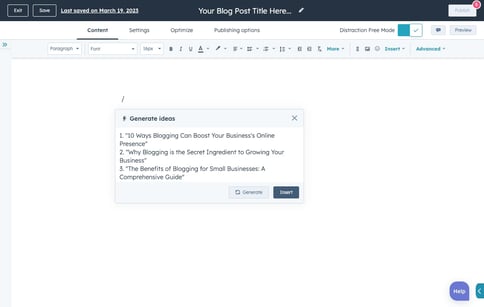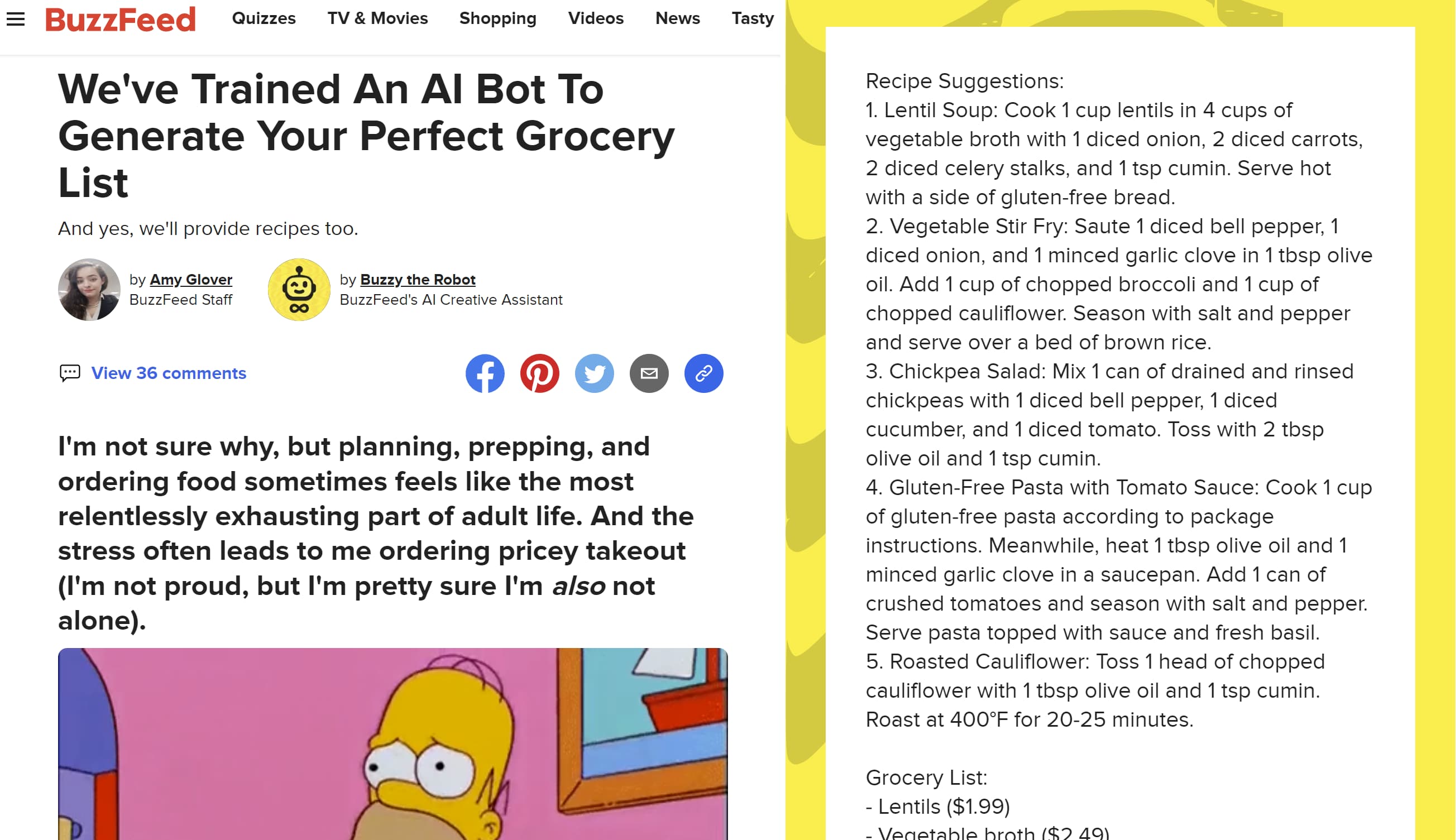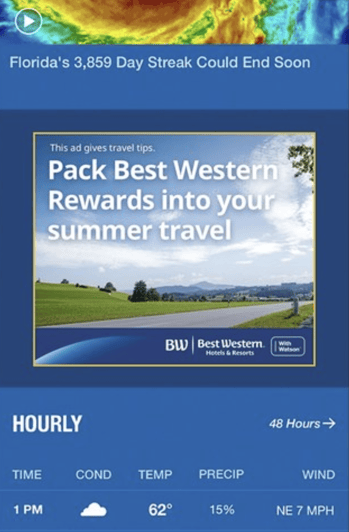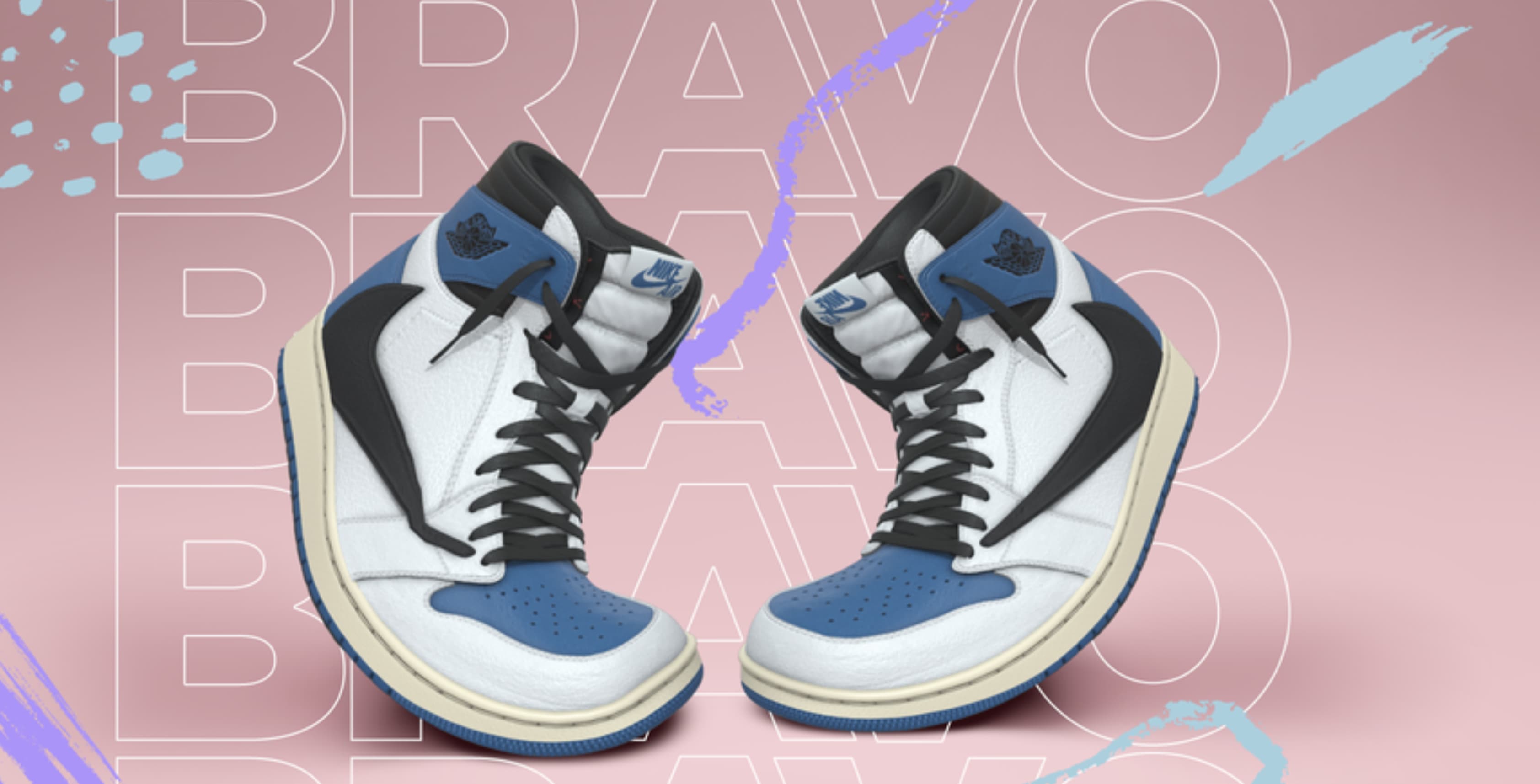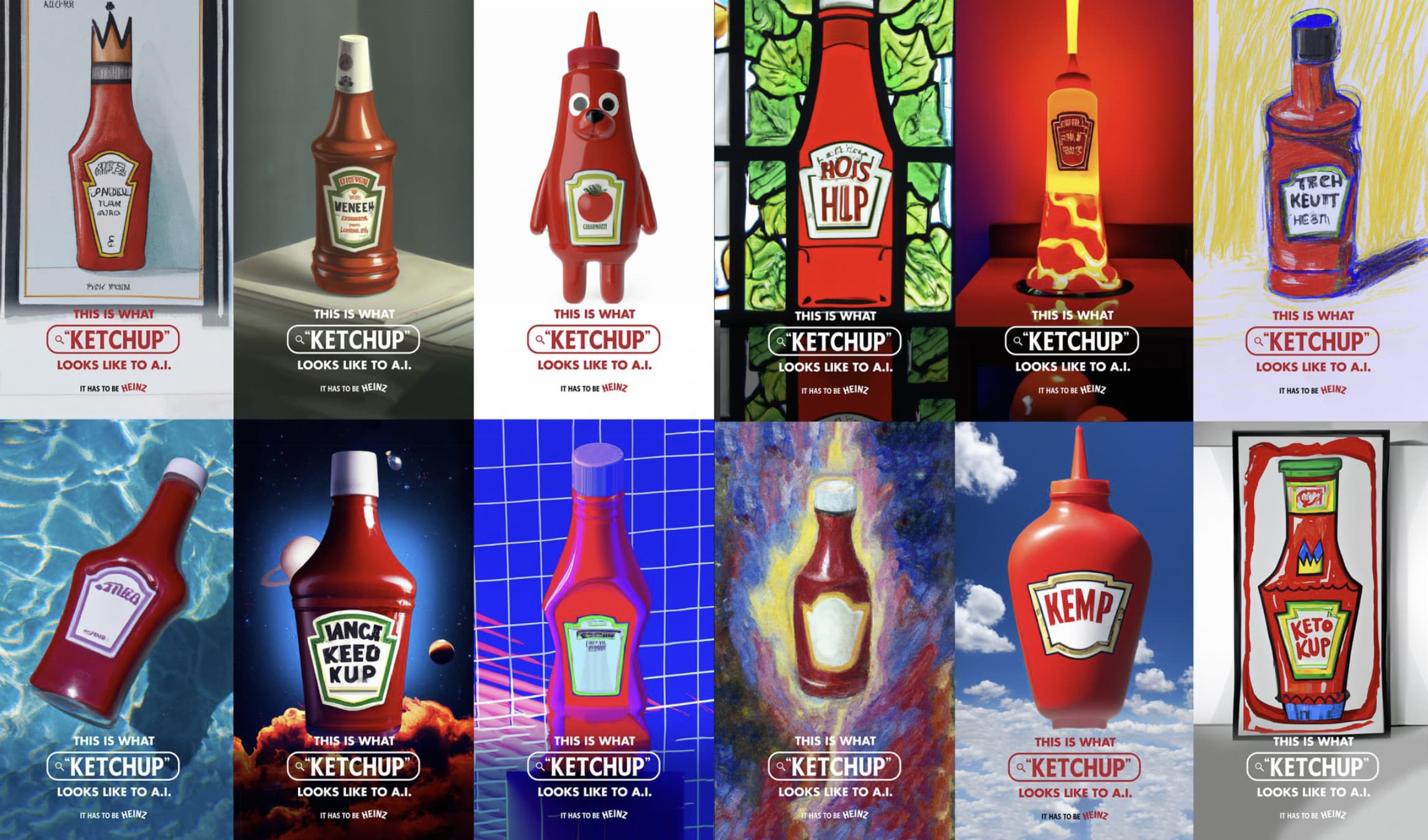AI Advertising: Pros, Cons, Tips & Examples
You’ve heard this a million times by now: artificial intelligence is changing the marketing world and how brands advertise to consumers — and the trend isn’t stopping anytime soon.
In fact, the global market revenue of AI in marketing will likely grow from $27.4 billion in 2023 to $107.4 billion in 2028.
But is AI something your brand should leverage in its next advertising campaign? To help you make that decision, here’s what you need to know about AI advertising, including tips and examples.
First, let’s examine the pros and cons of leveraging AI in advertising.
Challenges of AI in Advertising
Pros of AI in Advertising
Here are some benefits of leveraging AI in advertising.
Effectively Target Ads Through Data
In advertising, data can predict consumer behavior to create more effective targeted ads.
Forbes reported that combining AI and Big Data can automate “almost 80% of all physical work, 70% of data processing, and 64% of data collection tasks.”
Big Data is a term for a large amount of newly available data resulting from the growth of digital technology.
It’s also worth noting that 72% of marketing and business professionals agree that AI tools can help them pull insights from data they otherwise wouldn’t be able to find, according to our State of AI Survey.
Reach More Customers
AI can help your brand quickly assess what is working and not in its advertising efforts. For example, Coca-Cola uses AI algorithms to analyze when, where, and how consumers talk about the brand on social media.
Specifically, the company studied 120,000 pieces of social media content to understand the demographics and behaviors of customers and users discussing its products.
As a result, the brand can adapt its content to meet the needs of consumers and expand its reach.
Save Time and Money
Of course, one of the biggest draws of AI is its ability to work and generate results quickly. AI can swiftly gather, analyze, and sort vast amounts of data.
It can then use its findings to spot trends allowing marketers to make informed advertising decisions.
This can also save your business money in advertising by taking out the guesswork and quickly spotting opportunities more likely to generate revenue.
Challenges of AI in Advertising
Here are some challenges brands may face when using AI in Advertising.
Possible Inaccuracies in Data
AI-generated results are only effective if the data inputs are accurate. The data must represent all aspects of the customers, their behavior, and their journey.
So, companies must invest in ways to verify the accuracy of the data being put into the AI models to ensure their effectiveness.
Lack of Creativity
AI can be an excellent tool for gathering data to inform ad campaigns; however, humans still need to brainstorm creative advertising content that generates buzz.
For instance, consumers often gravitate to social media advertising that shows the brand’s values and how it aligns with their own. Funny, trendy, and relatable ads are also popular among audiences.
Right now, only humans can spearhead advertising content that is relatable and touching. An advertising campaign that is too reliant on AI can result in dull and disconnected advertising.
However, it’s important to note that while AI tools cannot spearhead creative campaigns, they can still be helpful in the creative process.
For example, HubSpot’s Content Assistant AI feature can generate blog ideas, blog outlines, marketing emails, and more to help steer marketers toward their goals.
Data Privacy
As mentioned earlier, AI can collect data to create more personalized ads. However, there is also the concern that AI algorithms and models can inadvertently collect sensitive information about consumers.
Companies leveraging AI to collect data for advertising will have to mitigate the risk by deciding what consumer information to protect and how.
7 AI Advertising Examples
Here are some companies that have successfully leveraged AI in their advertising campaigns.
1. Whole Foods
In 2021, Whole Foods opened several Just Walk Out stores across the U.S., allowing customers to pick up their items and leave without stopping at a register. The items are instead charged to the customer via AI.
The AI’s purchase information can help identify patterns and predict future behaviors. The information allows Whole Foods to send personalized messages to customers.
For example, if a customer regularly purchases pasta sauce, basil, and pasta, Whole Foods could send promo codes and discounts for other Italian-related ingredients and foods.
What We Like: The Just Walk Out stores create a simple customer experience for shoppers while seamlessly gathering helpful information that can better serve them in the future.
2. Buzzfeed
Media company Buzzfeed is using OpenAI to deliver personalized content to consumers at a massive scale that wouldn’t be possible without automation.
Specifically, Buzzfeed CEO Jonah Peretti said AI will help ” enhance the quiz experience, inform our brainstorming, and personalize our content for our audience.”
Buzzfeed isn’t looking to replace its writers with AI. Instead, writers and creators are collaborating with the site’s AI creative assistant, “Buzzy the Robot.” Below is a quiz written by a writer with help from Buzzy.
What We Like: The quiz and its use of AI show how AI can generate unique content that is personalized based on the behaviors of individuals.
3. Best Western
Best Western collaborated with IBM Watson advertising to create AI-powered ads to reach and engage consumers who are actively planning to travel around peak holiday weekends.
IBM’s AI tool, Conversations, was used by Best Western because traveling is a personal experience, and the tool could offer personalized travel recommendations.
According to IBM, the device was “trained on Best Western information and used natural language processing to enable 1:1 dialogue to deliver a unique travel recommendation for each user.”
Conversations provided real-time advice, tips, and inspiration for travelers, allowing them to prepare for upcoming travels and innovatively interact with Best Western.
According to IBM, The ads result in a 48% lift in visits to Best Western Hotel and Resort locations.
What We Like: The ads weren’t just visually appealing to get consumers to click. The ads also provided actionable advice and use for customers along with a personalized experience.
4. Coca-Cola
The beverage company launched its own AI platform built by OpenAi and Bain & Company exclusively for the brand.
The platform is called “Create Real Magic” and combines GPT-4 and DALL-E. GPT-4 produces human-like text from search engine queries, and DALL-E converts text prompts into images.
According to our survey, 44% of marketers use visual AI tools like DALL-E.
Combining the program, Coca-Cola created a campaign in which fans can create their own digital artwork based on aspects of the brand, such as the iconic bottle and script logo.
Participants could then download their creations and submit them to appear on digital billboards in New York’s Time Square and London’s Piccadilly Circus.
Pro Tip: When leveraging AI in your advertising, look for opportunities to involve your consumers in the creative process.
5. Chase
Chase Bank has a 5-year partnership with Persado, a New York-based company that applies AI to creative marketing. Chase Bank uses Persado’s machine learning solutions to humanize the company’s marketing copy further.
For example, a digital ad by Chase read, “Access cash from the equity in your home.” Persado’s version read, “It’s true—You can unlock cash from the equity in your home.” Persado’s version was a bigger hit with customers.
Pro Tip: While some AI solutions can write excellent marketing copy, you should still look to seasoned writers and copy editors to review AI-generated content to ensure the copy is accurate and aligned with your brand’s voice.
6. Dept and Hello Monday
Digital agencies Dept and Hello Monday teamed up to create an AI-powered advertising campaign using vacant shopfronts. The campaigns involved an AI “Shoe Mirror” that turns empty stores into interactive ads that generate revenue.
The Shoe Mirror appears on empty storefronts and analyzes the clothes of passersby to find shoes that match their outfits. The mirror then “places” the shoes on the feet via augmented reality.
Furthermore, the Shoe Mirror provides a QR code allowing passersby to purchase the shoes from within the display.
What We Like: This AI advertising is personalized and revenue-generating. It doesn’t make consumers feel like they’re being explicitly advertised to. Instead, it comes across as helping consumers by finding items that complement their attire.
7. Heinz
Heinz partnered with Rethink Ideas, a creative agency, to create a series of AI-generated advertising visuals.
The campaign started the team at Rethink Ideas began playing around with AI image generator DALL-E 2 and noticed that prompts related to ketchup yielded images that looked almost exactly like Heinz ketchup.
The agency then asked consumers to share their AI prompts for ketchup images. The best prompts were featured on social media and in print ads.
What We Like: This use of AI allows consumers to have fun and participate in the creative process. Furthermore, it’s a clever way to show how well-known and trusted Heinz is among consumers.
The brand is so well-known that AI immediately “thinks” of Heinz when prompted about ketchup.
AI can be a powerful tool that provides ample opportunities for brands looking for innovative ways to reach their audience.
From generating images to writing copy to gathering data — there are many ways AI can be implemented to personalize the customer experience and boost revenue.
Now that you know the pros and cons of AI and how you can use it, you’re ready to decide if and how AI can push your brand forward.
![]()



